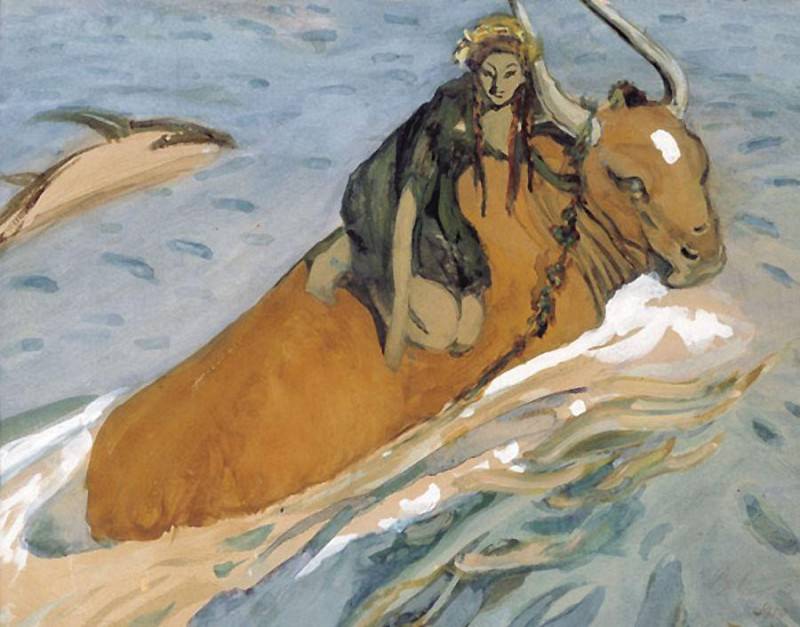Abduction of Europe 3. 1910 Valentin Serov (1865-1911)
Valentin Serov – Abduction of Europe 3. 1910
Edit attribution
Download full size: 900×705 px (0,1 Mb)
Painter: Valentin Serov
"The Abduction of Europe" is a masterpiece created in 1910 by Valentin Alexandrovich Serov, a famous Russian painter. The master’s painting was inspired by a trip to Greece he made in 1907. In particular, Serov was struck by the ruins of the palace of Knossos. The artist refers to the popular in the ancient mythology of the plot about the kidnapping of Zeus the beautiful Europe. The girl was the daughter of the Phoenician ruler Agenor.
Description of Valentin Serov’s painting The Abduction of Europe
"The Abduction of Europe" is a masterpiece created in 1910 by Valentin Alexandrovich Serov, a famous Russian painter. The master’s painting was inspired by a trip to Greece he made in 1907. In particular, Serov was struck by the ruins of the palace of Knossos.
The artist refers to the popular in the ancient mythology of the plot about the kidnapping of Zeus the beautiful Europe. The girl was the daughter of the Phoenician ruler Agenor. The mighty Zeus falls in love with her and decides to kidnap her. For this purpose he transforms himself into a bull and in this guise appears before Europa and her friends. As soon as the girl, deceived by the peaceable behaviour of the animal, gets on his back, the bull rushes into the sea and takes her beloved to Crete. Europe becomes the wife of Greek god and they have three sons.
This ancient legend repeatedly inspired artists long before Serov. But his canvas is strikingly different from the creations of his predecessors. There is nothing of the light tones, the lightness and elegance of lines and the marble transparency of academic canons. Serov’s painting gives rather an impression of scale and monumentality.
The composition of the painting The Abduction of Europe is interesting. The whole composition is based on the movement along the diagonal. This creates the effect of intense movement and striving upwards. The silhouettes of all characters, Zeus, the girl and the dolphin, are intentionally stretched out diagonally. The horizon line is very high. The sea - menacing, stormy and restless - takes up most of the space of the canvas.
In the center of the composition there is a bull with Europa clinging to him in fright. The motion of Zeus powerfully cutting sea waves is repeated by a dolphin, which only intensifies the dynamics of the painting and gives it a special rhythmic pattern.
Unusual and color solution of the work. Serov uses saturated, bright colors. He departs from the ancient canons and makes the bull not snow-white, but orange and terracotta. This is probably inspired by the frescos he saw in Crete. This stain stands out especially brightly against the blue-purple waves merging with the lead-gray sky.
Кому понравилось
Пожалуйста, подождите
На эту операцию может потребоваться несколько секунд.
Информация появится в новом окне,
если открытие новых окон не запрещено в настройках вашего браузера.
You need to login
Для работы с коллекциями – пожалуйста, войдите в аккаунт (open in new window).




















You cannot comment Why?